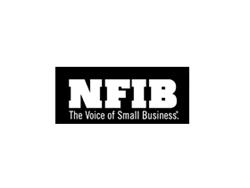SBET: Small-Business Owners Optimism Inched Down
- Home
- News
-
SBET: Small-Business Owners Optimism Inched Down
Washington, DC, April 12, 2007--The National Federation of Independent Business Small Business Economic Trends report released today showed that the Optimism Index lost 0.9 points in March, falling to 97.3. This month's index anticipates real economic growth between 2 and 2.5 percent. The Index was dragged down by less optimistic views about economic growth over the next six months and dimmed views about expanding their business at this time. However, plans to make capital outlays rose three points to very strong levels, perhaps reflecting owners' attempts to cut costs and raise productivity in the face of labor shortages.
The percent of owners citing the current period as a good time to expand fell six points to 12 percent of all owners. The net percent of owners expecting the economy to be better in six months than it is today fell five points to a negative 7 percent – more owners expect the economy to be softer than those that expect renewed strength.
Job creation plans remained solid, but not as exuberant as they were last year. A net 12 percent of owners plan to increase employment in the coming months, down one point from February but historically strong. Fifty percent of the owners hired or tried to hire one or more employees in March; 82 percent of these owners reported few or no qualified applicants for their job openings. Twelve percent of all owners cite the availability of qualified workers as their number one business problem. The percent of firms with an unfilled job opening rose one point to 26 percent, indicating that the unemployment rate is dropping.
In the construction industry, there appears to be no change in the percent with a job opening or with job creation plans compared to a year ago. We expect to see some unemployment due to a weakening housing market. However, some of those affected should be absorbed by a stronger commercial construction market.
There's also some bad inflation news. The percent of firms raising prices is going up, not down. From the low of 8 percent reached in December, the percent of firms raising average selling prices rose to 15 percent in March. This is too high to get the inflation rate into the Fed's target range of 1 - 2 percent.
But the price hikes are still too low to absorb the rising costs of hiring workers. Twenty-eight percent reported higher worker compensation compared to 38 percent last month. With only 15 percent raising prices, profit margins are likely to suffer. Labor accounts for about 80 percent of business costs, and it's going up. A profit squeeze is in the making, and labor's share of GDP is set to rise. Even so, the net percent of owners reporting profit gains did rise four points in March, helped by an increase in average selling prices and reports of improved sales volumes.
The cost of loans seems to have stabilized, with 35 percent reporting that they borrow regularly paying an average 9.3 percent on their loans, a story typical of the past year. The percent of firms reporting that loans were harder to get did rise one point, but remained historically low.
"Overall, the outlook didn't change much in March - no soaring economy, but no recession. The labor market continued to strengthen with more jobs and higher pay on the way," said William Dunkelberg, NFIB's chief economist. "The inflation news won't improve much between now and the next time the Fed meets, causing a continued dilemma. The Fed will have to choose between raising rates to fight inflation, or lowering rates to prop up a sagging economy, in particular a weak housing market."
